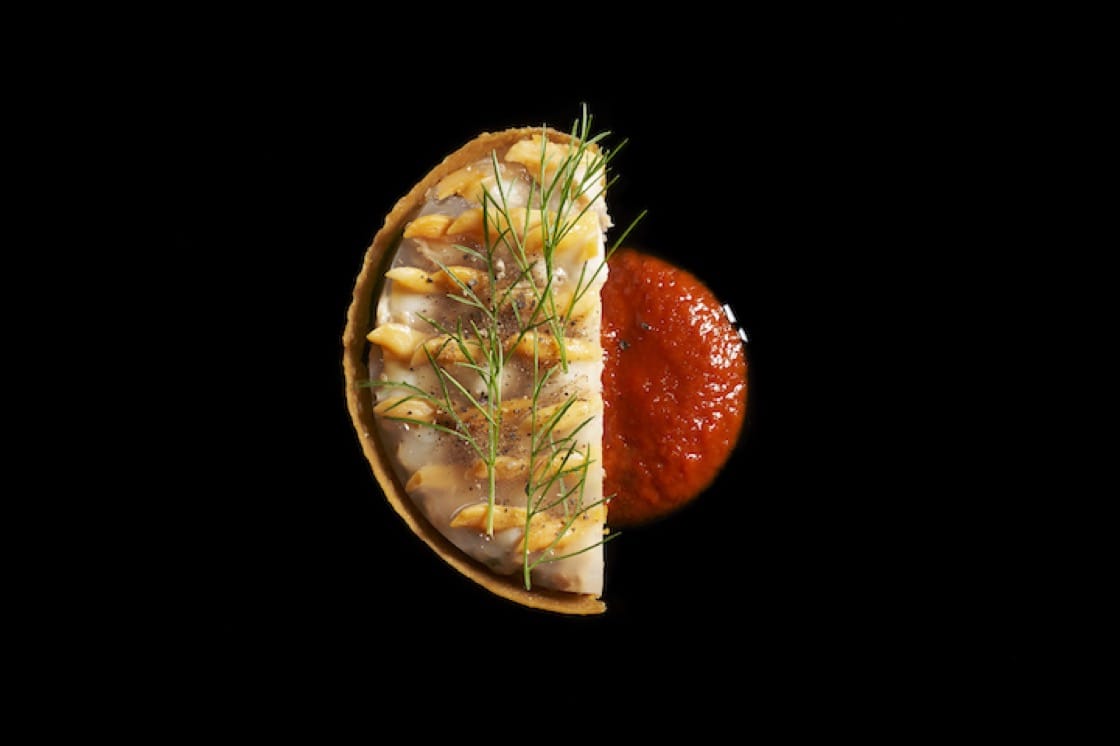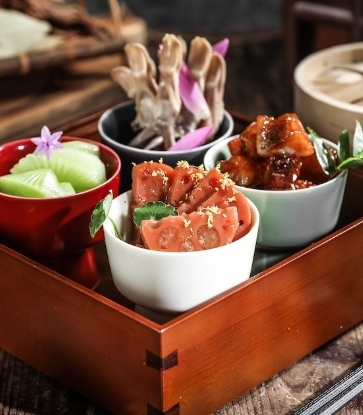
“I always try to plate things naturally and every single plate is distinct because each product is different. The focus remains on the produce, the technique is essential, but it all begins with the best available ingredient. Every ingredient on the plate has its purpose, which is to enhance the flavours of the dish, and I love using various herbs and flowers that are available every season to elevate the dish. For example, the combination of ingredients in the Asparagus dish brings a complete balance to the plate, from the ikura eggs to the finger lime caviar.” — Kirk Westaway, chef de cuisine, JAAN

“My focus of flavour pairings is reflected in my plating style, where the ingredients are plated in layers in accordance to their taste profiles and the dimension it adds to the dish. I refrain from using too much garnish or sauce, which takes away focus from the produce. A diner’s experience begins with the chef’s plating, as it determines and aids how the diner would navigate through the dish. The plating affects the entry of food, which then inevitably the flavours and their pairings which hit the palate.” — Han Liguang, chef-owner, Labyrinth

“I plate a recipe the same way I design my restaurants — by combining and contrasting layers of textures, colours and shapes. At the end of the day, we are always about putting customers first. The same concept applies to the way we plate: diners should instinctively know how to enjoy each dish the way it was conceptualised. As such, I’m not bound by techniques or rules. Instead, I allow the focal ingredient to lead my way around the design of each recipe. An example is Braci’s Beef Tartare. With the way it’s plated, it is instinctive for the diner to use his hands to pick up the baby gem lettuce, spoon the tartare in and choose his sauce. The plating breaks away from the conventional way of what a beef tartare ‘should look’ and is essential in building an element of surprise for our diners.” — Beppe De Vito, restaurateur-chef of il Lido Group, which runs the one-Michelin-starred Braci

“Whenever you start plating something, keep the result you want to achieve in mind (in terms of flavours, texture and expression). Take a direction and avoid going too far with the creation. Keep things clean and neat, it will be easier to manage. With raw dishes such as ceviche, as well as tartare or carpaccio, it is even more key not to overwork the product and keep the plating very honest and straightforward, there is no deceiving message. An example at Beefbar is our Langoustine dish with ceviche dressing, mango and avocado. The thinly sliced langoustine and the ingredients are displayed in a way where each bite has a balanced amount of garnish and provides flavours throughout the degustation.” — Andrea Spagoni, executive chef, Beefbar Hong Kong

“I like minimalism as it truly focuses on the essence of the main component. It is a contemporary approach where sometimes achieving simplicity may be complex. There is definitely a ‘trend’ in plating like there is in fashion or music, but some basic rules are always present — the techniques, attention to details and precision. My aim is to take all these and make the dishes look pretty and simple but yet the plating is intuitive, speaks for itself and draws the diner’s attention to the dish, guiding them to enjoy a gastronomic experience. A dish like this requires what I call ‘intuitive plating’. I plate the different elements of the dish in a such a manner that the patron eats in a specific order to achieve those results, where the flavour evolves from first bite to last bite.” — Emmanuel Stroobant, chef-owner, Saint Pierre

“I usually like to plate my dishes in a simple but surprising manner, concealing many key ingredients before it is presented to the diner. I think that it is always important to bring an element of surprise to diner. For example, the Hamaguri Clam dish is nestled under a home-made white scallop sheet, created using scallops, which have been blended and pounded into thin sheets. The silken scallop sheets camouflage the Hamaguri Clam. This dish might seem ordinary to the naked eye, but upon cutting into the sheet, it reveals the sweet and briny flavours from the clam. Combined with fennel creme and confit fennel, it creates a refreshing dish.” — Sun Kim, head chef, Meta























